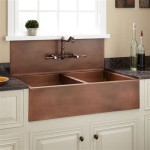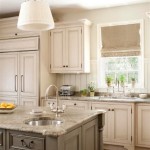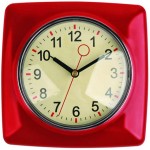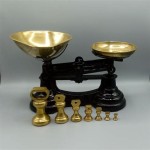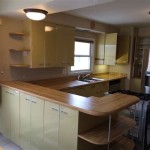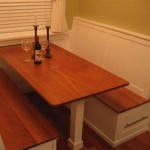When it comes to decorating your kitchen, the color you choose can make or break the look. The right shade can bring a sense of warmth and coziness to the space. On the other hand, if it’s too bright or too dark, it can make the room feel cramped and uninviting. With so many colors to choose from, it can be hard to know where to start. This guide will help you find the perfect hue for your kitchen.
Understanding the Color Wheel
Before you start picking out colors for your kitchen, it’s important to understand the basics of color theory. The color wheel is a great starting point for understanding how colors interact with each other. It is divided into three primary colors (red, yellow, and blue), three secondary colors (orange, green, and purple), and six tertiary colors (yellow-green, blue-green, blue-violet, red-violet, red-orange, and yellow-orange).
Colors that are next to each other on the wheel are known as “analogous” colors. These colors tend to look harmonious when used together. For example, a kitchen with walls painted yellow, yellow-orange, and orange will create a warm and inviting atmosphere. On the other hand, colors that are opposite each other on the wheel are known as “complementary” colors. These colors create a high contrast effect and can be used to create a bold look.
Choosing a Color Scheme
When choosing colors for your kitchen, it’s important to consider the other elements in the space. For instance, if you have dark wood cabinets and floors, it’s best to choose a lighter color for the walls. On the other hand, if you have light wood cabinets and floors, a darker color can help to create a cozy atmosphere. It’s also important to consider the amount of natural light in the room. If the room has a lot of natural light, you can get away with using brighter colors. If the room has very little natural light, you should choose a color that will reflect the light and make the room feel brighter.
Once you’ve figured out the color scheme, you should also consider the shades of the colors. If you’re going for a warm and inviting look, choose a light or medium shade of the color. If you’d like to create a bold and dramatic effect, choose a darker shade. It’s also important to consider the undertones of the color. For instance, a yellow color can have a warm yellow-green undertone or a cool blue-green undertone. Choosing the right undertone can make a big difference in the overall look of the room.
Popular Colors for Kitchens
When it comes to choosing a color for your kitchen, there are a few popular options that can help you create the perfect look. Neutral shades, such as white, beige, and gray, are always a safe bet. They create a classic and timeless look that will never go out of style. If you’d like to add a little bit of color, you can choose a light shade of blue or green. These colors create a calming and serene atmosphere, perfect for a kitchen. For a bolder look, try a bright shade of yellow or orange. These colors create a cheerful and vibrant atmosphere that will make your kitchen the envy of the neighborhood.
Conclusion
Choosing the right color for your kitchen can be a daunting task. By understanding the basics of color theory and taking into account the other elements in the room, you can find the perfect shade for your space. Neutral shades are always a safe bet, but if you’d like to add a bit of color, try a light shade of blue or green. For a bolder look, choose a bright shade of yellow or orange. With a bit of thought and planning, you can create a kitchen that is as beautiful as it is functional.

:max_bytes(150000):strip_icc()/BEHR_21.06_COLORTRENDS_THS_KITCH_001_CrackedPepper_RGB1-57fb4ccab50942f5a40ce96f734f70f1.jpg)













Related Posts

